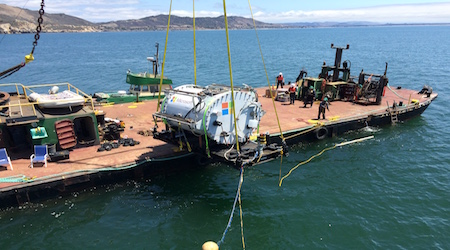Critical Facilities Summit Focuses on Future of Data Center Technology
Microsoft's Project Natick research explores possibility of undersea data centers.
By Wendy Dietzler, Director of Education
Could the next important skill set for facility managers be scuba diving? FMs may want to start focusing their career development on that, as well as on remote monitoring technologies, new power-generation technology, and cloud computing services.
If Microsoft’s recent test is any indication, oceans could become the future home for data centers, and the requisite mission-critical facilities that house them will require some new management skills. That is piquing our interest as we plan for the 2016 Critical Facilities Summit, which will be held Oct. 3-5 at the Charlotte (N.C.) Convention Center.
This fourth annual Critical Facilities Summit brings together senior-level professionals involved in the design, construction, management, and operations of data center, laboratory, hospital, financial, and other mission-critical facilities. Brought to you by Building Operating Management magazine and a range of technology partners, this conference and exhibition helps facility managers understand changing technologies and IT managers understand how the facility supports the tech.
The “Project Natick” research that Microsoft conducted last year involved submerging data servers in sealed vessels underwater about a half-mile off the Pacific Coast for four months. While submarines have long housed vast amounts of sophisticated technology, Microsoft researchers believe this was the first time a data center had been deployed below the ocean’s surface.
Solving Problems
According to the researchers, “going under water could solve several problems by introducing a new power source, greatly reducing cooling costs, closing the distance to connected populations, and making it easier and faster to set up data centers.” The ocean water was expected to keep the servers cool regardless of surface temperatures, reducing the need for maintenance and engineering managers to spend time doing that.
Christian Belady, general manager for datacenter strategy, planning, and development at Microsoft, shares the notion that this kind of project is valuable for the research gained during the experiment. It will yield results, he says, even if underwater data centers don’t start rolling off assembly lines anytime soon.
“At first I was skeptical, with a lot of questions: What were the costs? How do we power it? How do we connect? However, at the end of the day, I enjoy seeing people push limits,” says Belady, who reportedly is focused on driving efficiency in data centers. “You have to predict two years in advance what’s going to happen in the business,” he says.
According to a report on Microsoft’s website (news.microsoft.com/features), with the first phase of the project completed, “Belady’s team has succeeded in making data centers more efficient than they’ve ever been. He founded an industry metric, power usage effectiveness (PUE), and in that regard, Microsoft is leading the industry. Data centers are also using next-generation fuel cells … and wind power projects to improve sustainability through alternative power sources. Data centers have also evolved to save energy by using outside air instead of refrigeration systems to control temperatures.....”
Attendees can look forward to exploring these and other innovations at the 2016 Critical Facilities Summit this fall. So save the date, check the website for the agenda as it develops.
Email comments and questions to wendy.dietzler@tradepress.com.
Related Topics:












